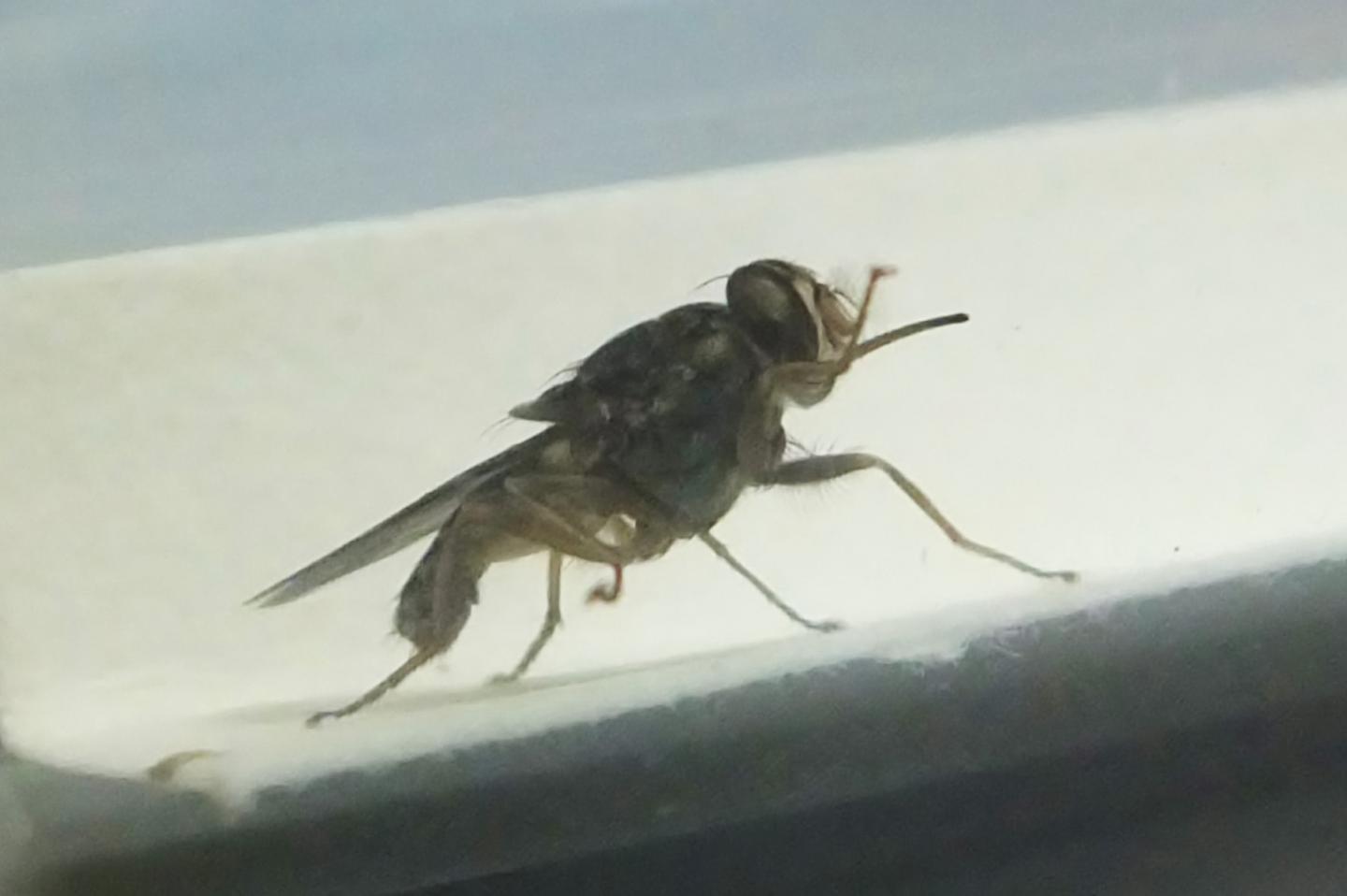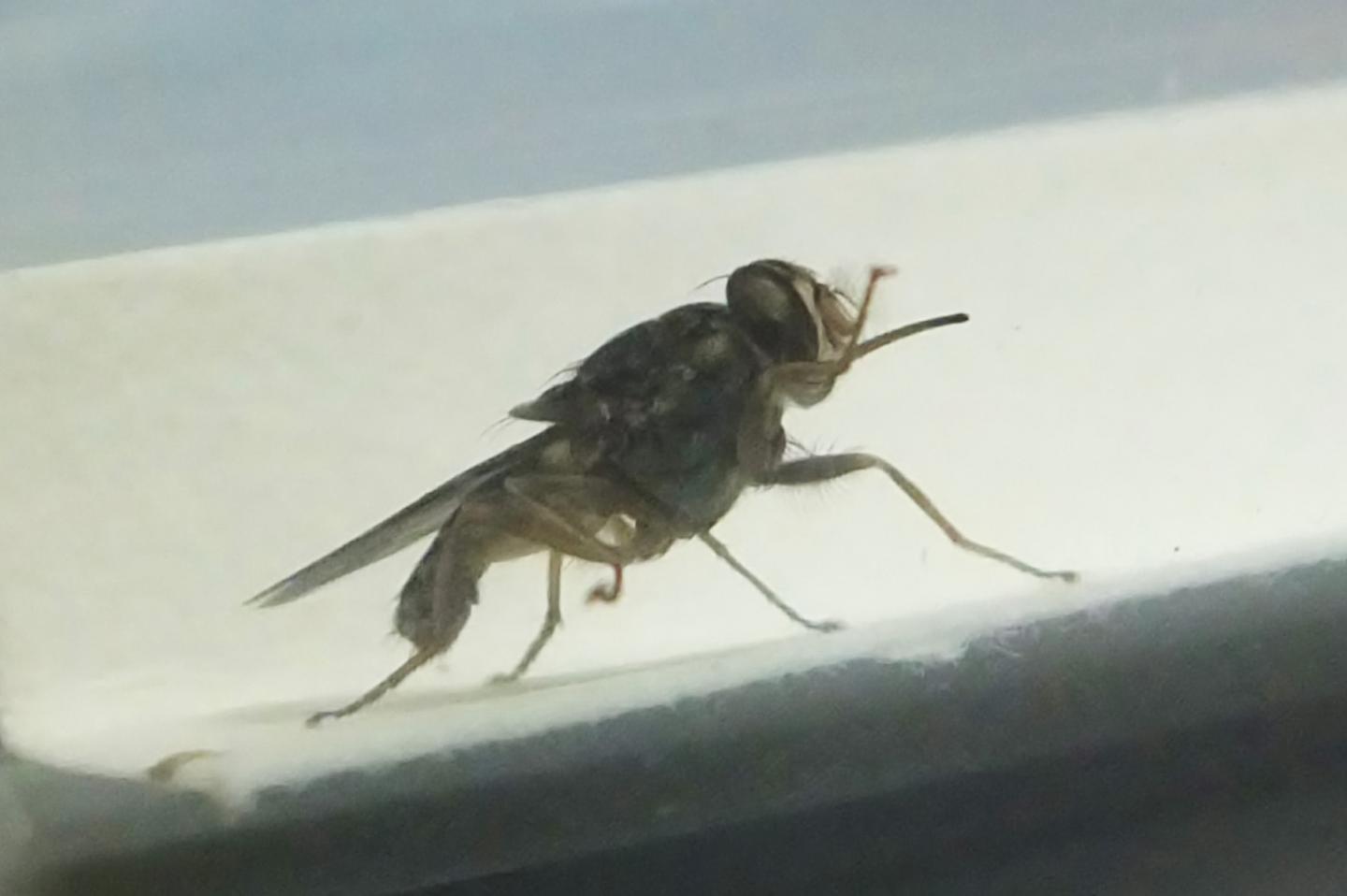
Credit: University of Bristol
Researchers at the University of Bristol have been taking a close-up look at the biting mouthparts of the African tsetse fly as part of ongoing work on the animal diseases it carries.
Using the new high-powered scanning electron microscope in the University's Life Sciences Building, researchers from the Trypanosome Research Group were able to see the rows of sharp teeth and rasps that the fly uses to chew through the skin when it bites. The teeth tear the delicate blood capillaries in the skin, so the fly can suck up the blood.
To stop the blood clotting, the fly squirts saliva containing anti-coagulant into the wound through a narrow tube inside the proboscis.
To their surprise, the researchers found that the tip of this tube is decorated with intricate finger-like structures with suckers.
Professor Wendy Gibson from the School of Biological Sciences, led the research which has been published this week in the journal Parasites & Vectors.
She said "This was an unexpected finding — the textbooks just show a plain pointed end to the saliva tube.
"We've no idea yet what this ornate structure is for — we haven't come across anything like it in other bloodsucking insects such as midges and mosquitoes."
The tsetse fly is a bloodsucking insect that carries human sleeping sickness and the animal disease, nagana. The needle-like proboscis is armed with a formidable array of sharp teeth and rasps.
Professor Gibson added: "No wonder it hurts when one of these flies bites you."
###
This research was funded by the Biotechnology and Biological Sciences Research Council (BBSRC) and a South West Biosciences Doctoral Training Partnership postgraduate studentship.
Media Contact
Richard Cottle
[email protected]
44-117-394-0156
@BristolUni
http://www.bristol.ac.uk





